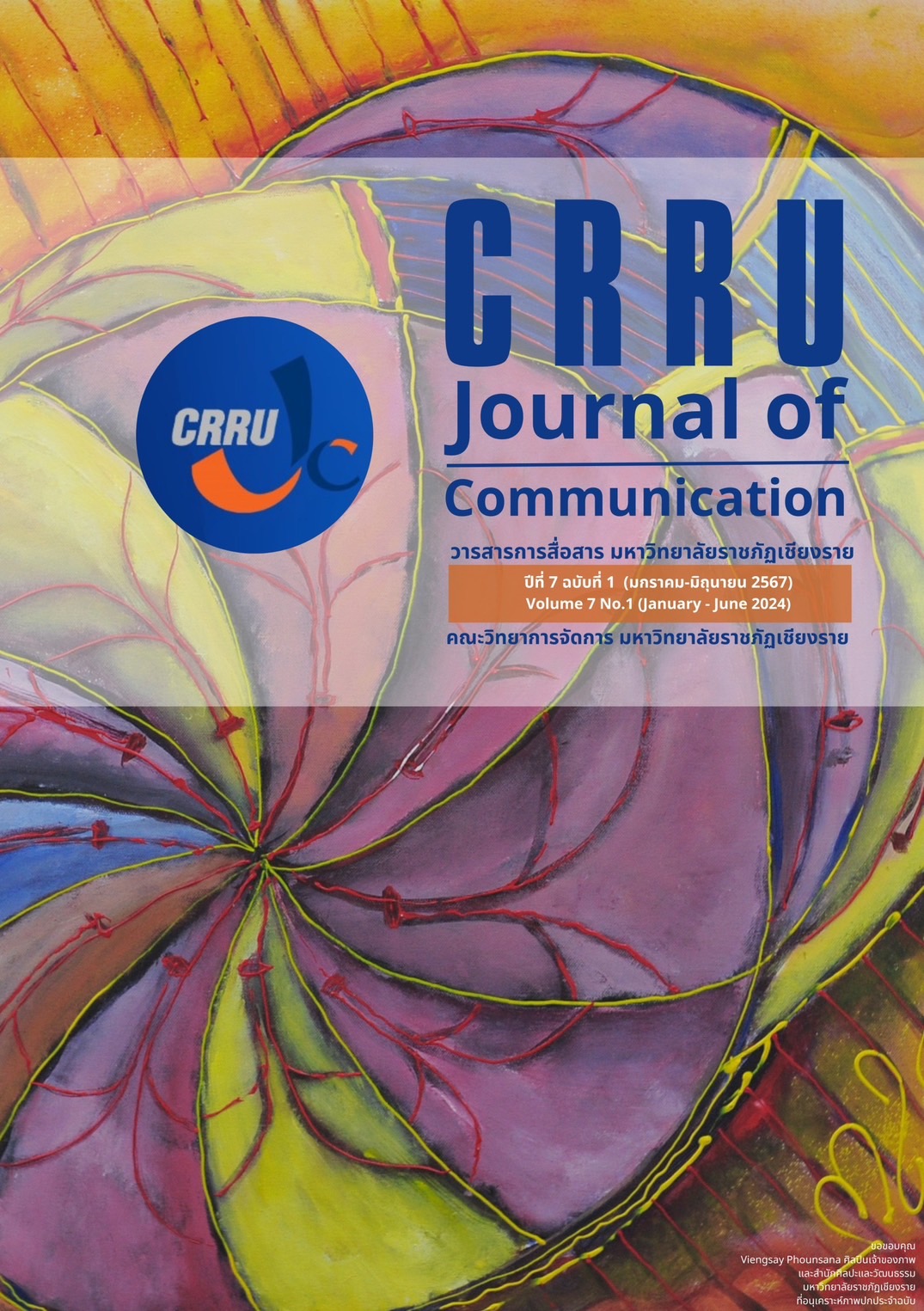Strategies for Presenting the Format and Content of News and Photo News in Internet Meme Media THAI Society
Main Article Content
Abstract
This research aims 1) to analyze the format and content of news presentations and news images appearing in internet meme media, and 2) to study the strategies for presenting news and news images of Internet meme media according to the concept of Internet memes, the concept of news and news value, the theory of news agenda setting, and the concept of subculture and the process of cutting and pasting. This qualitative research uses a method to textual analysis from internet memes on 4 Thai Facebook Pages, including the basement karaoke page, the egg cat X page, the pearl movie page, and the Movie Gag page.
The research findings revealed the following: 1) Presentation Formats: (1.1) The Structure of news meme writing consists of the leading news content, source, accompanying image, and comments; (1.2) Posting Formats include Self-Promotion, Inadvertent Celebrity, Urban Rumors and Hoaxes, Advertising and Marketing, Image Editing and Reference to Pop Culture. (1.3) Types of internet memes include text, images, and image-text combinations. 2) Content Presentation: (2.1) News Levels are categorized into Hard News and Soft News; (2.2) The Focus of News coverage emphasizes National News; (2.3) The Characteristics of News content in internet meme media include Real Time, Entertainment, Diffusion and Addable, Repetition and Creativity. 3)Presentation Strategies: These include the Values of News, the Agenda-Setting and the Cut and Mix Process, Still, it must be outstanding and become a social phenomenon that creates participation in online society and extends to the offline world.
Article Details
References
คริษฐ์ ลิ้มตระกูล. (2557). นวัตกรรมอินเทอร์เน็ตมีมในการสื่อสารทางการเมืองไทย: ศึกษากรณีการคัดค้านร่างพระราชบัญญัตินิรโทษกรรมในปี พ.ศ. 2556. (วิทยานิพนธ์ศิลปศาสตรมหาบัณฑิต). สถาบันบัณฑิตพัฒนบริหารศาสตร์. กรุงเทพฯ.
ดาต้าเซ็ต สำนักข่าวอินโฟเควสท์. (2565). thailand-media-landscape-2021-2022. สืบค้นจาก https://www.dataxet.co/media-landscape/2022-th/facebook
ภูษณา ถนอมศักดิ์. (2558). กระบวนการสร้างและการแพร่กระจายของอินเทอร์เน็ตมีมในสังคมไทย. (วิทยานิพนธ์นิเทศศาสตรมหาบัณฑิต). จุฬาลงกรณ์มหาวิทยาลัย. กรุงเทพฯ.
วสันต์ มนต์ประเสริฐ์. (2564). องค์ประกอบและปัจจัยที่มีผลต่อความสำเร็จของมีมในเฟซบุ๊ก. (การค้นคว้าอิสระวารสารศาสตรมหาบัณฑิต). มหาวิทยาลัยธรรมศาสตร์. กรุงเทพฯ.
ศิรดา เหรียญวิทยากุล และ วิไลวรรณ จงวิไลเกษม. (2559). วัฒนธรรมการทำข่าวออนไลน์ผ่านเฟซบุ๊คแฟนเพจ โพสต์ทูเดย์ กรณีศึกษา อาการป่วยปอ ทฤษฎี สหวงษ์. วารสารสหวิทยาการ, 13(2), 79-110.
ศิริพร ปัญญาเมธีกุล, พิทยาภรณ์ แซ่อึ้ง, มิ่งกมล มั่นทรงธรรม และ อติกานต์ สำราญพันธ์. (2564). สติกเกอร์และมีม: การสื่อสารผ่านเครือข่ายสังคมออนไลน์. วารสารวจนะ, 9(1), 1-25.
สำนักข่าวอินโฟเควสท์. (2566). thailand-media-landscape-2023. สืบค้นจาก https://www.infoquest.co.th/tag/thailand-media-landscape-2023
เสริมศิริ นิลดำ. (2550). คุณค่าข่าวในภาวะวิกฤตทางสังคม. (วิทยานิพนธ์นิเทศศาสตรดุษฎีบัณฑิต). จุฬาลงกรณ์มหาวิทยาลัย. กรุงเทพฯ.
Brown, G. (2013). Web Culture: Using Memes to Spend and Manipulate Ideas on a Massive Scale. Retrieved from https://www.pacific.edu
Hebdige, D. (1987). Subculture: The Meaning of Style. London: Routledge.
McCombs, M. E., & Shaw, D. (1972). The agenda-setting Function of mass media. The Public Opinion Quarterly, 36(2), 176-187.
Mencher, M. (2010). Melvin Mencher's news reporting and writing (12th ed.). New York: McGraw-Hill Higher Education.
Octavita, A. I., & Zaimar, Y. S. (2018). Semiotic analysis of satire meme connecting women’s identity in Brillio Net. Journal of English Language Teaching, 3(1), 38-45.
Rambe, P. (2012). Critical discourse analysis of collaborative engagement in Facebook postings. Australasian Journal of Educational Technology, 28(2), 295-314.
Shifman, L. (2014). Meme in Digital Culture. Massachusetts: The MIT Press.
Shifman, L. & Thelwall, M. (2009). Assessing global diffusion with web memetics: The spread and evolution of a popular joke. Journal of the American Society for Information Science and Technology, 60(12), 2567-2576.


